Of the Inguinal canal is a tubular connection between the abdominal cavity and the external pubic area. In men, the spermatic cord runs here, in women just a strap of the uterus and fatty tissue. If parts of the intestine emerge through the inguinal canal, one speaks of an inguinal hernia.
What is the inguinal canal?
The inguinal canal (Canalis inguinalis) is four to six centimeters long. It runs in a tubular shape from the abdominal cavity through the abdominal wall and obliquely forward. In both men and women, the genitofemoral nerve and the ilioinguinal nerve run through the inguinal canal, two nerves that innervate parts of the thigh, the abdominal muscles and the external genitalia. In addition, the lymph vessels of the inguinal lymph node pass through the inguinal canal.
Anatomy & structure
The roof of the inguinal canal is formed by the internal oblique abdominal muscle (Musculus obliquus internus abdominis) and the transverse abdominal muscle (Musculus transversus abdominis). The floor of the inguinal canal consists of the fibers of the inguinal ligament (ligamentum reflexum). This pulls from the anterior upper iliac spine to the pubic bone and forms a boundary of the abdominal wall.
A part of the external oblique abdominal muscle, the musculus obliquus externus abdominis, simultaneously represents a lower and anterior boundary of the inguinal canal, so that a connective tissue groove is created that runs obliquely to the middle. The posterior wall of the inguinal canal is formed from the inner abdominal wall fascia, the fascia transversalis, a connective tissue covering the inside of the abdominal wall. The inguinal canal begins at the deep inguinal fossa, a shallow pit on the inside of the abdominal wall, and ends at the side of the pubic bone (Os pubis) at the bony tubercle of the pubic tubercle. The inguinal canal has an inner and an outer opening.
The inner opening, also known as the inner inguinal ring or annulus inguinalis profundus, lies above the inguinal ligament. It can be recognized from the inside by a retraction of the vaginal process. In men, it extends as the Fascia spermatica interna, i.e. as a thin fascia enveloping the spermatic cord, towards the testes. The outer inguinal ring, anulus inguinalis superficialis, is a slot-shaped opening that is located in the tendon plate of the musculus obliquus externus abdominis, i.e. the external oblique abdominal muscle.
The outer opening of the inguinal canal is covered by the superficial abdominal fascia, which in men, like the internal spermatic fascia, wraps around the spermatic cord. However, this is referred to as the external sperm fascia.
Function & tasks
In the male fetus, the testicles move from the abdominal cavity, where they originally developed, through the inguinal canal into the scrotum. The testicle turns out all layers of the abdominal wall. This protuberance envelops the testicle and is also known as the vaginal extension or processus vaginalis. The protruding layers of the abdominal wall then form the spermatic cord (funiculus spermaticus) in the inguinal canal.
Blood vessels such as the testicular artery, the testicular vein, the deferent ductus artery and the deferent ductus vein run in the spermatic cord. In addition, various nerves such as the testicular plexus and the ductus deferentis plexus as well as the genital branch run through the spermatic funiculus.
In women, the uterine ligament, the ligamentum teres uteri, runs through the inguinal canal to the labia. It is accompanied by a supplying artery, the arteria ligamenti teretis uteri. The uterine ligament is used to fasten the uterus and is additionally supported by fatty tissue in the inguinal canal. The vaginal process still present in men normally regresses in women. If it does not do this, it is known as a female hydrocele or a nuck cyst. This abnormality is very rare and is most likely to occur in premature babies.
Diseases
If viscera emerge from a weak point in the inguinal canal, one speaks of an intestinal hernia, an inguinal hernia or, more specifically, a hernia. The inguinal hernia is one of the most common hernias, along with the femoral and umbilical hernias. Men are affected significantly more often than women. Depending on the location of the hernia, a distinction is made between direct and indirect inguinal hernias.
The direct hernia runs through the posterior wall of the inguinal canal. The hernial portal is in the immediate vicinity of the medial inguinal fossa in the so-called Hesselbach triangle. The Hesselbach triangle is a part of the abdominal wall that is muscle-free and therefore predestined for an inguinal hernia. In contrast to the direct hernia, the indirect hernia can also be congenital. The hernial portal is always located in the inner inguinal ring. The inguinal hernia can extend into the scrotum and lead to massive swellings there.
In adulthood, an inguinal hernia can be caused by either a weak abdominal wall or an inguinal canal that is too wide. An increase in pressure in the abdomen, for example through chronic coughing, pressing when going to the toilet or through strenuous exercise, can also cause a hernia. Symptoms of the inguinal hernia are usually painless swellings in the groin area. The swelling can usually be pushed away while lying down. If severe pain suddenly occurs in combination with a swelling that cannot be pushed away, the cause may be a pinched inguinal hernia. This leads to circulatory disorders of the trapped viscera with the risk of death. A life-threatening intestinal obstruction can also result.
An inguinal hernia is usually treated surgically. The procedure can be an open or a minimally invasive procedure. The uterine ligament which runs through the inguinal canal is also of clinical importance. Through the connecting inguinal canal, tumor cells can migrate via the uterine ligament from the uterus to the labia and form metastases there.

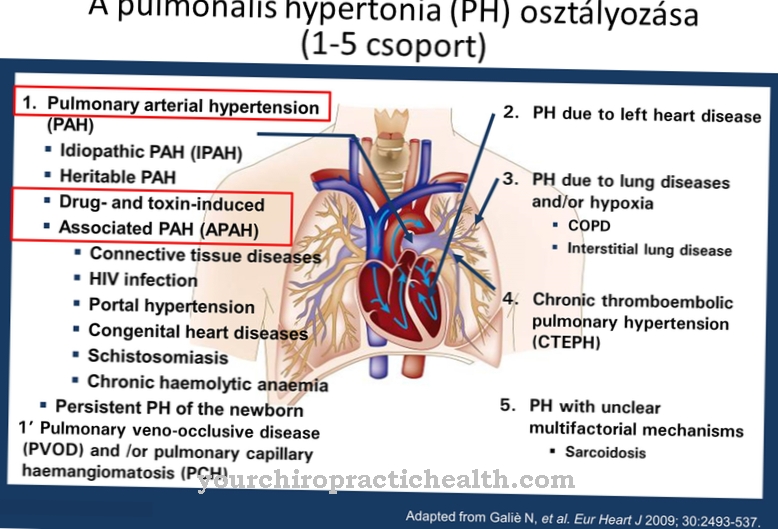
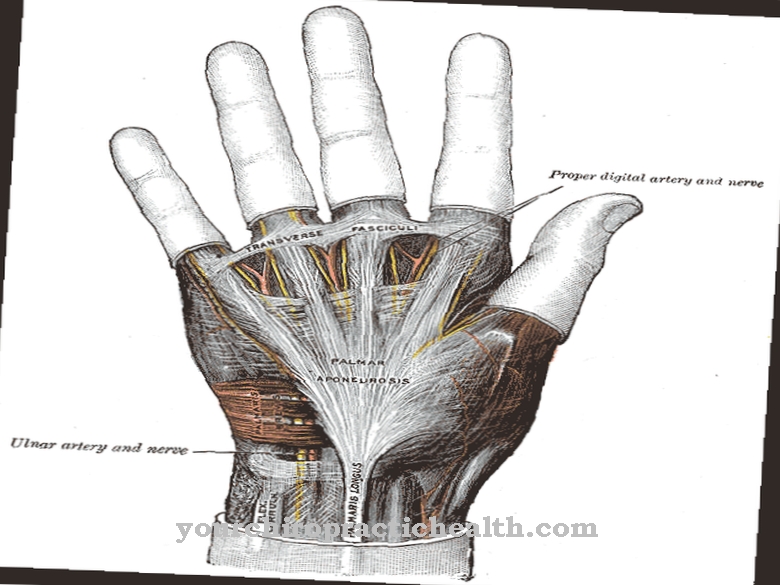
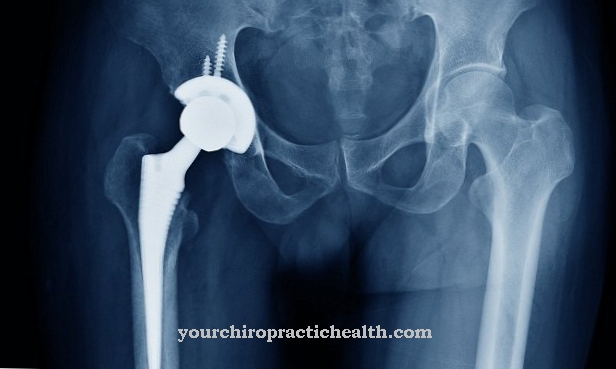

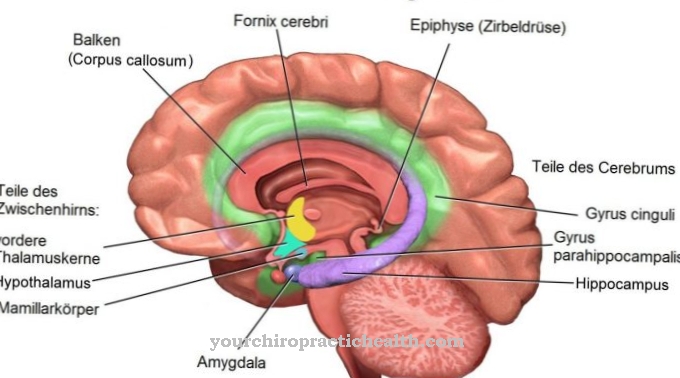
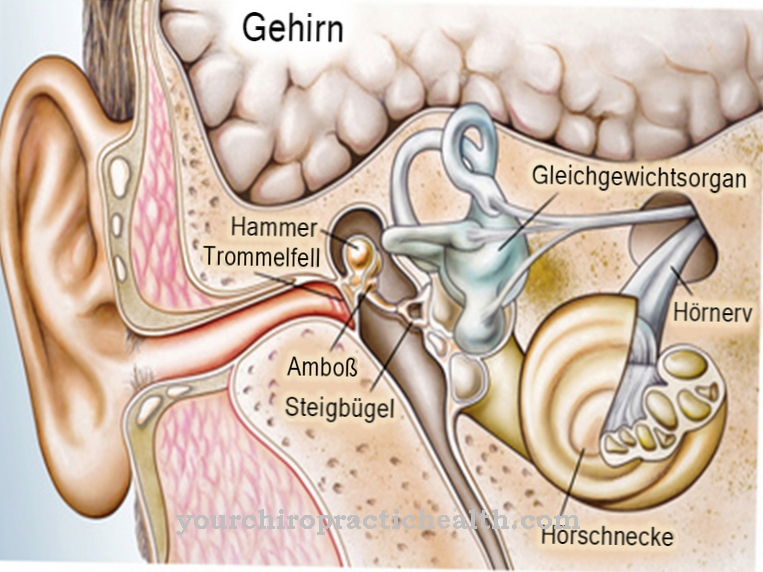

















.jpg)



